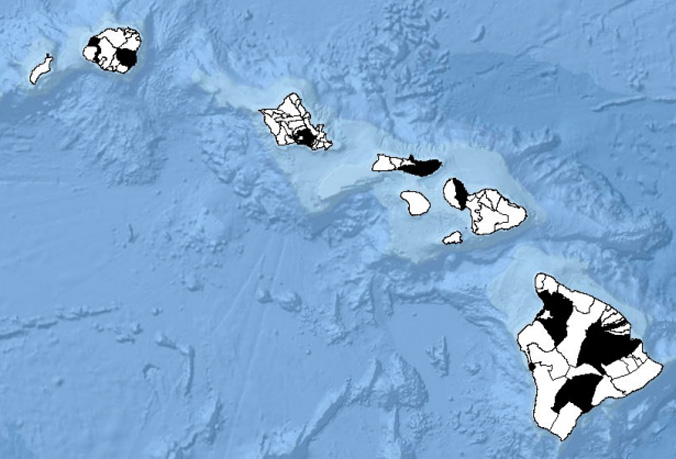Colleen Inouye has been an obstetrician-gynecologist (OB-GYN) on Maui for the past 35 years. She’s seen firsthand the severe impact the state’s doctor shortage has had on her community. Inouye says for patients, that shortage can mean waiting up to six months for an appointment or delaying treatment.
“They wait until their situation becomes very severe, and by that time, of course, they’ll have a different diagnosis and probably a worse diagnosis than if they had sought care earlier in their situation,” Inouye said.
The University of Hawaiʻi is asking state lawmakers to consider funding an expansion of the John A. Burns School of Medicine (JABSOM) to Maui with the hope of retaining more medical students and increasing the number of local doctors.
According to JABSOM’s latest Hawaiʻi Physician Workforce Assessment Project Report:
- 152 doctors moved away from Hawaiʻi
- State’s physician shortage remains between 519 and 820 doctors: The calculations are based on the average U.S. use of physician services by a population similar to Hawaiʻi’s. The wide range is due to the state’s unique geography. There is a statewide shortage of 300 primary care doctors. Subspecialty needs include: infectious disease (72 percent short), pathology (58 percent short), pulmonology (56 percent short), colorectal surgery (52 percent short), hematology/oncology (47 percent short), thoracic surgery (45 percent short) and allergy and immunology (43 percent short).
- Hawaiʻi had a net gain of 47 doctors overall in 2019

All four counties are experiencing physician shortages: Oʻahu (377 needed), Hawaiʻi County (230 needed), Maui County (153 needed), Kauaʻi County (60 needed).

A rise in demand, lack of services
On a busy day, Inouye treats up to 25 patients, and about 2,000 fill the database of her practice in Kahului. Some clients fly in from Molokaʻi and Lānaʻi because there is no OB-GYN on their island.
Maui County’s doctor shortage is palpable. According to the latest census, the Valley Isle is home to more than 167,000 residents, and JABSOM’s assessment report indicated the county of Maui has a shortage of 153 doctors.
How expansion can help address physician shortage
JABSOM is looking to expand to Maui so medical students can earn a four-year degree closer to home. The $1.4 million budget request includes critical faculty positions that are needed to create a strong base upon which to build further medical training, including possible expansion of some residency rotations to Maui. The proposal is part of UHealthy Hawaiʻi, a UH systemwide initiative to leverage the UH System to improve health and healthcare in Hawaiʻi and the Pacific. Research shows more than 80 percent of doctors who attend medical school and train in-state end up practicing there too.
Related: Future doctors eager for med school expansion to Maui
Currently, the medical school accepts 77 students per year at its Kakaʻako location. If funding is approved, the proposed cohort on Maui would accrue approximately five to six more students each year. Inouye interviews aspiring medical students on the Valley Isle during their JABSOM application process. She said a majority want to practice on island.
“They really want to feel like they’re a part of the community and that they’re helping the patients here. If you start off as a medical student you have that opportunity to do that and there’s a feeling of obligation and duty to those members of the community,” Inouye explained.
JABSOM’s Physician Workforce report also highlighted that 50 percent of Hawaiʻi’s doctors are at least 55-years-old. Inouye isn’t set on retiring just yet but is concerned the gap will widen if critical changes aren’t implemented soon.
“Unfortunately, unless we have a new supply of younger physicians, we’re going to run into a problem,” Inouye said.
Once funding is available for the Maui-based teaching hub, recruitment could begin in the next academic year. If funding is approved in 2020, the first class could start in July 2021.
More about UHealthy Hawaiʻi initiative
Opening a second JABSOM campus is just one strategy the university is proposing to tackle workforce issues within the state’s health care system. The UHealthy Hawaiʻi initiative helped to support a legislative informational briefing in August 2019 on potential solutions to Hawaiʻi’s health workforce shortages across different sectors of health professions. Efforts are also underway to align UH’s health programs with the needs of Hawaiʻi’s health industry, such as in the area of physical therapy, which is in high need in Hawaiʻi.
Goals for UHealthy Hawaiʻi in 2020 include supporting recruitment into the health professions from Native Hawaiian and Pacific Islander communities and high school students; expanding telehealth; addressing shortages in clinical training sites; and expanding innovative models of care delivery, such as through the use of clinical pharmacists in primary care teams.
—By Moanikeʻala Nabarro

